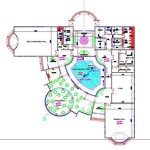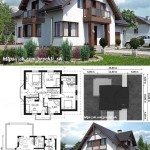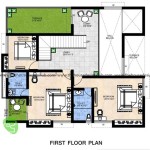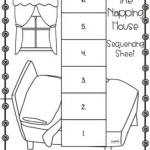Draw a Room Plan with Ease: Essential Considerations for Professional Results
Creating an accurate and informative room plan is crucial for various purposes, ranging from home renovations to furniture placement. Whether you're an interior designer, architect, or simply someone looking to optimize your living space, understanding the essential aspects of drawing a room plan will help you achieve professional-looking results.
1. Scale and Measurement
Accuracy is paramount when it comes to room plans. Use a measuring tape to accurately take measurements of the room, including the length, width, and height. Determine the appropriate scale for your plan, ensuring that it effectively represents the dimensions of the room while maintaining a clear and legible display.
2. Walls and Openings
Start by drawing the outline of the room, including all walls, windows, and doors. Label the walls clearly and accurately indicate the direction of each opening. Use the appropriate symbols or abbreviations to denote windows (W) and doors (D).
3. Fixed Elements
Identify and include any fixed elements within the room, such as fireplaces, built-in cabinetry, or structural supports. These elements should be accurately positioned and scaled to ensure a realistic representation of the space.
4. Furniture Placement
When planning furniture placement, consider the scale of the furniture and the available space. Use symbols or outlines to represent different types of furniture, such as sofas, chairs, tables, and beds. Experiment with different arrangements to optimize flow and functionality.
5. Circulation and Access
Ensure that your room plan allows for comfortable circulation and access to all areas of the room. Pay attention to the width of pathways and the location of potential obstacles. Plan for adequate clearance around furniture and consider the placement of lighting to optimize visibility and ambiance.
6. Appliances and Fixtures
Include the location of appliances and fixtures, such as refrigerators, ovens, sinks, and lighting fixtures. Accurately indicate the size and position of these elements to ensure proper installation and functionality.
7. Dimensioning and Labeling
Clearly dimension the room plan, including the length and width of walls, the spacing between furniture, and any other relevant dimensions. Label all elements of the plan, including furniture, appliances, and fixed elements, to enhance clarity and understanding.
Conclusion
Drawing a professional-looking room plan requires attention to detail and a thorough understanding of the essential aspects discussed above. By following these guidelines, you can create accurate and informative plans that will serve as a valuable tool for home renovations, interior design projects, and furniture placement optimization.

Room Layout Planner Design

Room Layout Planner Design
:max_bytes(150000):strip_icc()/plan-your-room-579be53f5f9b589aa9883da4.png?strip=all)
The Best Free Room Layout Planners

Top 10 Free Interior Design Room Planning Tools

Floor Plan Creator Planner 5d

Best Free Room Planner Tools

Room Planner Free Templates To Make Plans

Room Layout Planner Design

Rambling Renovators Design A Room For Free One Challenge Week 3 Small Layouts Bedroom Layout

Floor Plan Creator And Designer Free Easy App








